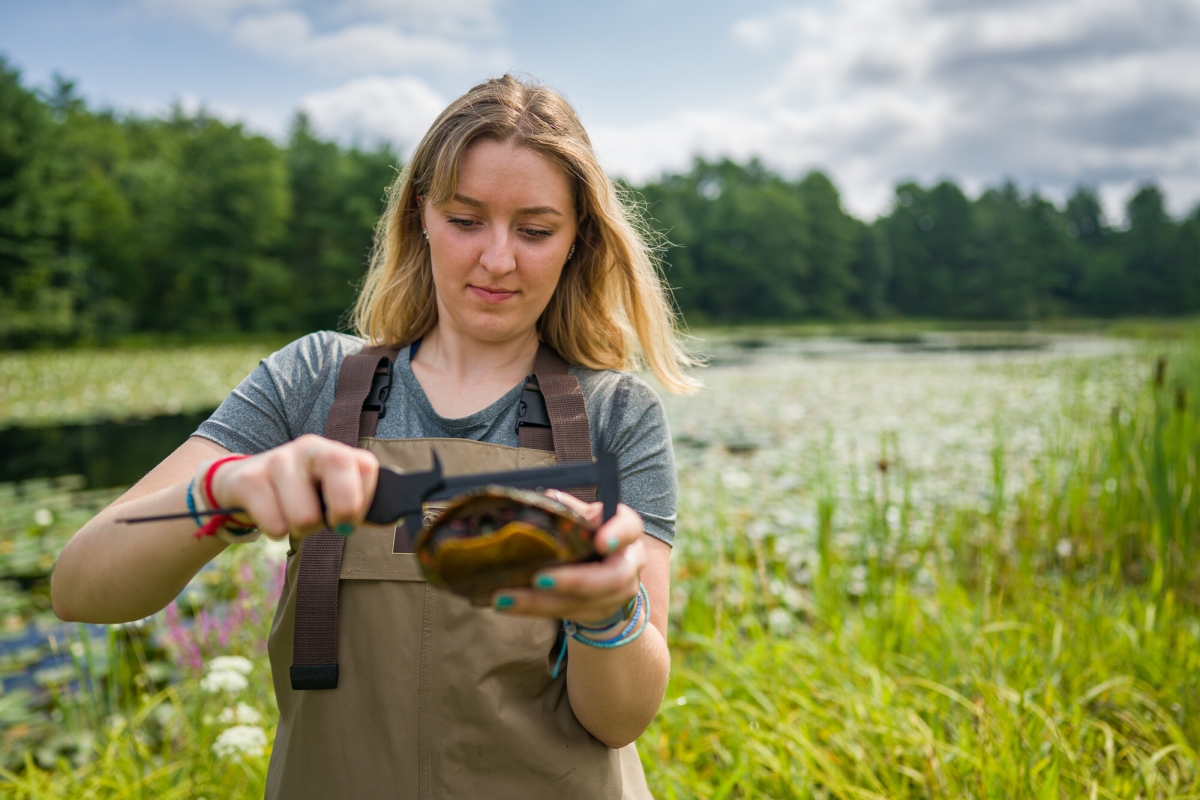Since majoring in Wildlife and Conservation Biology at UNH, I’ve always pictured myself spending days in the field. I assumed that spending each day handling and researching animals was unrealistic, but that maybe on occasion I could pick up a species or look at an individual from afar. This assumption was proved wrong so quickly and so pleasantly when I began my Summer Undergraduate Research Fellowship (SURF).

Each week of my project consisted of turtle trapping in the field and research in the computer lab working with a Geographic Information System (GIS). Another field technician and I joined a graduate student at UNH, who is leading a long-term research project on the freshwater turtles of New Hampshire. Each week we would head to a set of three ponds where we collected turtles on Mondays, Tuesdays and Wednesdays. We would then move traps on Wednesdays to three new ponds that would be visited on Thursdays and Fridays. Each pond had 5 to 10 traps, either large hoop traps, small minnow traps, or a combination of both. Each trap was baited with a can of cat food and staked into the pond. To collect turtles, we would throw on a pair of waders and head into the water to see what we caught. Once we gathered the turtles, we identified them as either a recaptured turtle or a new captured turtle.
At the beginning of this research project, the prior lead wildlife biologist marked each turtle's shell with a unique code using a triangular file. Recaptured turtles are from previous years of markings, or markings that we have made this summer with the same technique. We further identified the species of the individual (i.e. Painted, Snapping, Blanding’s, etc.) and the sex. Each turtle was measured with dial calipers. All of the information gathered was recorded onto a field spreadsheet. Lastly, we marked the turtles, photographed them and placed them back into the pond.
My focal species is the Blanding’s turtle (Emydoidea blandingii). Blanding’s turtles are state endangered freshwater turtles that undergo long distance movements each year. One of the main reasons they are endangered is because they get hit by vehicles when they are trying to cross roads in an attempt to move from pond to pond or pond to upland nesting habitat.
Some days of each week I went to the lab rather than the field, and some days I did both. I walked to campus to meet with my mentors to work on my GIS project. I had various objectives within my SURF research proposal that I tackled in the lab.
Within the lab, I am working on a connectivity assessment to determine how well Blanding’s turtles can move across the NH landscape, considering the developed land use within their habitat and range. Additionally, I am looking for potential areas of conservation management for Blanding’s turtles.
When I began the SURF proposal process I knew I would have an incredible summer of eye opening experiences, however this research experience immensely exceeded my expectations. I spent mornings in the field that I wished could continue all day long. I learned more about wildlife and conservation biology than any summer before, while extensively learning about the charismatic freshwater turtles of New Hampshire. This experience not only gave me hands-on skills that I will use throughout my entire career, but it also allowed me to connect with peers, faculty and mentors that will enhance my journey as a wildlife biologist.
